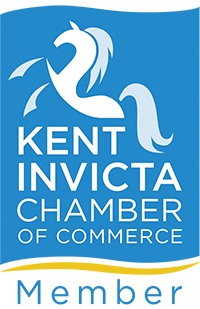Introduction to the different types of water filter systems.
There is a growing public awareness within the UK of the quality of our drinking water, much of it driven through the sale of bottled water, as well as filter jugs and fridge / inline filters, and there is a real growing trend towards purification systems - the drinking water market is BIG business.
The problem with a market increasingly driven by resellers is that the focus is often on their sales plan and profitability rather than doing the right thing for the consumer.
Numerous companies also use questionable tactics to create enough fear & doubt to make people worry about the water quality they drink.
Drinking Water in the UK
The water we use for drinking, washing up, cleaning, bathing, toilet use, etc., is treated and recycled repeatedly. However, pollution impurities, human neglect, and the growing number of pharmaceutical drugs we take, in addition to sediments and minerals, can continually degrade the quality of our water.
However, what is the truth?
The truth about our drinking water
We are fortunate in the United Kingdom.
Although it is considered accurately reported that every drop of water on the planet has gone through at least 6 sets of kidneys, the good news is that the earth's Hydrologic Cycle is considered the natural method of cleansing water.
The earth, sun, and atmosphere work together to imitate a distiller. It is the largest water purification system known to man.
Additionally, water authorities treat our water in the UK to such high standards.
In the UK, drinking water standards are governed by the Drinking Water Inspectorate under the arm of DEFRA.
So you can be reassured - and don't let anyone tell you otherwise – that the water we get from our mains water is good enough to drink. So, unlike in some other countries, you can drink it straight from the kitchen tap if you prefer.
So, if the water is good enough to drink, why do we treat it further in our homes?
Most people are satisfied knowing that their drinking water supply is good enough. However, a growing number of consumers would like to remove the offensive smell and taste of chlorine, and many wish to remove rock chalk from their drinking water, which makes their kettles and coffee machines scale up and leaves scum on their cups of tea, not to forget the unsightly brown staining of the mug.
The water that comes out of our kitchen taps has been treated to the point that it has been ticked off as meeting all the criteria of drinking water regulations; however, from the point where it has been treated and tested, the journey still has a long way to go before the water reaches your home, and is complete.
Regional water treatment systems can occasionally fail in the UK, and the water boards instruct us to boil our drinking water. This happens more frequently in the North West. Our drinking water quality needs to be better than the quality approved by the water boards, which is so far back in the water treatment journey process because that is precisely what it is – very far back in its journey to your kitchen tap.
At the very least, it needs filtering to remove the sediment it picks up as it travels through the pipework in roads and to remove the excess chlorine used to keep the supply safe from bacteria while it completes its journey to your home.
What about the pungent smell and taste of chlorine?
How often do we get that pungent smell of chlorine that makes us quickly pull the glass away from our lips, or do we feel a fishy smell coming from the water? Or how about when we turn the tap on to find the water all cloudy or fine sediment particles suspended in the glass or saucepan? Our kettles scale up.
Our much-loved cups of tea have a film of scum on the top. We have to use more squash and cordials than is necessary to mask the flavour chalk gives to hard water.
In hard water areas of the country, there is said to be a link between hard water and people suffering from kidney stones – Our kidneys can fully absorb dairy calcium. But, are they as good at absorbing rock calcium (chalk)? Three clinical studies say there is a link between kidney stones and hard water, while a further 3 state there is no link - I have written a webpage here about these 6 studies.
Ways to Treat Our Drinking Water
There are many ways to treat our drinking water, each with its benefits.
Here, we have split them into three categories: purity and benefit.
1. Reverse osmosis system
Pure water, everything filtered out.

RO systems are popular with our customers. The quality of water that an RO system gives is beautiful.
RO systems use multiple filters to remove almost everything, including sodium. The main filters are changed annually. Some RO systems are unpumped, and some are pumped.
Choosing the right one depends on the survey conditions, including water pressure. We'll help you choose the right one for your home. For more information and a quote, don't hesitate to get in touch with us
Find out more about reverse osmosis.
3. Soft water – inline filtered water
Softened, filtered water, taste and odour filtration.

Did you know that it is perfectly safe to drink softened water? The World Health Organisation even classes softened water as 'wholesome'. All of that said, the flavour of softened water is very individual.
To me (Laurence), it tastes like boiled water has gone cold and flat. My mum thinks it has a slightly metallic taste. Dad can't tell the difference. Some customers have said it has a sweeter taste, and others think it is exactly as water should taste – clean and fresh!
Fitting an inline filter is a fantastic way of enjoying softened water to its full benefit and is exceptionally popular with our customers.
4. Hard water – inline filtered water
Scale reduction, taste and odour filtration.
Many customers with hard water at the kitchen sink have begun to move towards an inline water filter that removes limescale.

The filter media is a very high grade of premium coconut carbon rather than just coconut fines. Also, it includes a food-grade scale reducer to help protect the kettle and coffee machine from scaling. These need to be fitted to a separate drinking water tap (faucet) on the side of the sink not to deplete the scale, reducing media too quickly.
The filter typically lasts 12 months or 6,000L and gives Brita quality water equivalent to Cartridge B in the jug filter section above.
The filter we have produced will remove taste and odour. If fitted to hard water, your kettle will still scale up, and you'll still need to use more cordial to mask the chalk in the water, but at least it will be more like drinking bottled water. For more information and a quote, please contact us.
5. Hard water – inline filtered water
Taste and odour filtration.
An alternative to the 10" housing filter is an inline filter, some of which include housing heads; others are simpler, like the one above.
There are many on the market, many of which are sold online. Our experience with many of these filters available online has not been great – a high proportion of these filters are coconut fines or coconut sediment with a mesh to capture the debris of the coconut. Cheap and ineffective.

The online market is designed to move products quickly and profitably for the companies concerned, so many filters online are from Asia. They are being sold by people working from their garages here to capture some of the UK markets. Many Asian filters leave an aftertaste that can taste like plastic or work well for 4–6 months but then degrade relatively rapidly.
The filter we use of this type is one we have worked hard to source. The filter media is a very high grade of premium coconut carbon rather than just coconut fines and lasts typically 12 months or 6,000L and gives Brita quality water equivalent to Cartridge A in the jug filter section above. This filter can be fitted to the main cold kitchen tap and, in most homes, will last the year and not reduce flow rates much.
The filter we have produced will remove taste and odour. If fitted to hard water, your kettle will still scale up, and you'll still need to use more cordial to mask the chalk in the water, but at least it will be more like drinking bottled water.
6. Multiple or single 10" Filter housings under your sink
Often the traditional, more old-fashioned way of treating water.

These filter housings can be singular or multiple, depending on the supplier and what sediment or minerals you wish to remove from the incoming water mains.
If singular, they are frequently just a 10" carbon block filter. While there are different quality grades, these filters typically remove chlorine, but some leave a better taste than others.
The housings and pipe fittings can become worn over time, and as they get older, components may require replacement. They take up a bit more space under the kitchen sink, normally require a company to come in and change the cartridges, and are a little old-fashioned. We can do so much better nowadays!
These can be fitted to hard water or softened water.
7. Jug filtration
This is very much a 1990's way of treating water.
Jug filters were all the rage many years ago and still remain popular today. Their biggest challenge is that they are often too big to go in the refrigerator, so they find a home on the kitchen counter. The problem with doing this is that the first thing the filters remove is chlorine, and once we remove chlorine, we encourage bacteria to grow.

The best rule of thumb is that if you have a jug filter, please protect yourselves and your family by either keeping it in the fridge or a cool dark cupboard so that light or warmth cannot encourage the growth of bacteria.
There are many types of jug filter cartridges, and they use one version of coconut carbon or another. Not all coconut carbons are the same, though. The cheaper carbon can leave a lingering after-taste that tastes like plastic.
If you are using the real Brita jug filters, these are, without a doubt, the best we have tested. Brita does three types of cartridges:
- Cartridge A – A taste and odour of carbon to polish the water.
- Cartridge B – A taste and odour of carbon to polish the water, as well as a food-grade chemical to help prevent your kettle or coffee machine from scale, but you'll still get a scum on your tea from the hard water.
- Cartridge C – The top-grade cartridge has water-softening resin, which removes the scale from the water, after which the water passes through a taste and odour carbon to polish the water. This water is the best quality, making a beautiful cup of tea!
Filters can be expensive, and many jugs include filter change indicators, reminding us to change them regularly to give the best water quality possible.
8. Straight from the incoming main
Unfiltered water, just as it comes.

In most cases, our tap water is perfectly safe, so if you want to, you can safely fill a glass of refreshing water straight from the mains water supply.
Many of the homes we visit are, however, either drinking bottled water or using a jug filter, normally because they don't like the taste of the mains tap water they are drinking. This is normally because tap water is heavily chlorinated. The water authorities chlorinate the water supply to kill bugs, making it safe to drink, but this can leave a pungent smell.
Another reason many people don't drink mains water is it has a really 'cleansed' taste; in other words, it tastes of the smell of the purification process often associated with inner cities. One customer recently likened this to going into a public toilet and smelling the cleansed smell of the facilities. That got me thinking!





